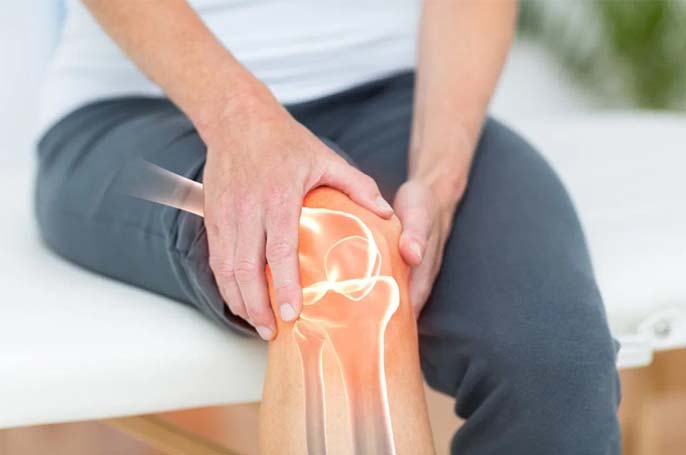Knee Replacement

Knee Replacement Surgery is an orthopaedic procedure in which the doctors replace the damaged knee joint of the patient with an artificial graft. The knee joint can get damaged due to various reasons such as:
- An injury
- A severe blow to the knee
- An underlying medical condition like Osteoarthritis
- Rigorous physical activities
The surgery for Total Knee Replacement requires anaesthesia and the process takes approximately 1 to 2 hours. It is carried out by making an incision on the knee to expose the affected joint and a graft made up of ceramic, plastic, or metallic is fixed in its place. This graft is created by highly specialized experts to suit the needs of the patient. Knee Replacement Surgery can be performed for either one knee at a time or for both knees simultaneously.
Types of Knee Replacement Surgery : There are mainly two types of Knee Replacement Surgery.
- Total knee replacement- This type of surgery is performed to replace both sides of your knee joints.
- Partial knee replacement- In a partial knee replacement, only one side of your knee joint is replaced. The operation for the same usually takes lesser time than the total knee replacement.
Why knee replacement surgery is done ?
In some diseases knee joints may get damaged causing severe pain and posing very difficulty in movement. In conditions where medicines and other non surgical procedures are not at all helpful then Knee Replacement is the only option. Some of the common problems associated with knee are-
- Osteoarthritis – This type of arthritis is generally found in people of 50 years or older, in some cases it may be found in young people. Cartilage present between bones in a joint acts as a cushion and provides soft and smoother movement of bones. With time bones cartilage face wear and tear, so bones strike with each other causing pain in joints.
- Rheumatoid Arthritis – In this type of arthritis synovial membrane of the joints gets inflamed and thickened, which damage the bone cartilage causing pain and stiffness.
- Post traumatic arthritis – This type of arthritis is observed in serious knee injury, which can cause fracture and can damage the bone cartilage or ligaments. This arthritis causes pain in knee joint and problem in movements.
Surgical Procedure:
The typical knee replacement surgery procedure involves the following steps:
- An orthopedic surgeon makes an incision (a cut) on the front side of the knee which helps to expose your knee cap. Later it is moved to the side so the orthopedic surgeon can get to the knee joint.
- The damaged ends of the thigh bone (femur) and shin bone (tibia) are carefully cut away. The ends are precisely measured and shaped to fit the appropriately sized prosthetic replacement called as an implant. A dummy joint is positioned to test that the joint is working properly. Adjustments are made, the bone ends are cleaned, and the final prosthesis is fitted.
- The end of the femur is replaced by a curved piece of metal, and the end of your tibia is replaced by a flat metal plate. These are fixed using special bone ‘cement’, or are treated to encourage the bone to fuse with the replacement parts. A plastic spacer is placed between the pieces of metal. This acts like cartilage, reducing friction as the joint moves.
- At Our Hospitals, our surgeons prefer computer navigation technique to perform the knee replacement surgery. This will provide approximately 100% accuracy in placing the implants. Also with more than 99% of the success rate. This computer navigated technique will also help the patient to walk within 3 hours* after his knee joint replacement surgery.
- The incision is closed with either stitches or the clips. A dressing is applied to the wound.


